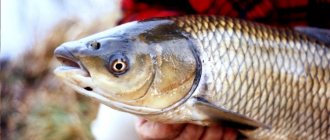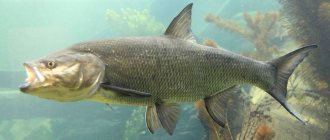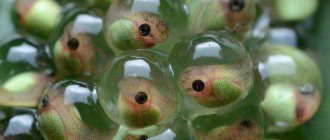The lifespan of a catfish depends on its variety and conditions of detention. The average lifespan of an individual is about 8 years. In the wild, large species can live to be 100 years or more. It is possible to keep about 800 varieties of catfish in an aquarium. Thus, a popular species is the chain-mail catfish, covered with fused bone plates. It has a bottom sucker mouth and loves to feast on algae. This species includes catfish Ancistrus, Otocinclus, Loricaria, Sturisoma, whose life expectancy in good conditions is limited to 8 years.
Also common in the aquarium hobby are armored, or callichtaceous, catfish, distinguished by two rows of bony plates. A special feature of the fish is its ability to breathe atmospheric air. This species includes corydoras, dianema and tarakatum, which live on average 6-7 years.
The armored family, which is characterized by covering the body and head with bony plates and three pairs of long mustaches, is also popular. The most popular representatives of the armored species are considered to be agamixis and platidoras, which live up to 15 years at home, and up to 20 years in the natural environment.
The lifespan of catfish from the fringed catfish family is 5-15 years, but there is evidence of individuals that have lived up to 23 years in nature.
Another common inhabitant of aquariums is the colorful flat-headed catfish, or pimelodaceae. In nature, it has a fairly long lifespan, but it is impossible to give exact figures, but in an aquarium, a representative of the family, for example, Sorubium paddlefish, lives from 5 years or longer.
Body structure
The body of representatives of this species has an oblong shape with a large rounded head and a very long tail. Small fish are sometimes called "ties" because of this. There are no scales or large fins, except for the anal one. The body color is dark with shades of black, green and brown. The saggy abdomen is light in color. The body length of a catfish can reach 3-4 meters, and its weight is about 300 - 400 kilograms. Fish rarely grow to such sizes, but this does not stop individual fishermen from inventing stories about fights with giant fish.
general description
The number of species of aquarium catfish is huge. There are miniature species, not exceeding 2-3 cm in length, and large fish, reaching up to 40 cm or more. The colors of catfish are very different.
External characteristics and behavioral features common to all catfish:
- The abdomen is flattened, allowing the fish to move comfortably above the bottom soil.
- There are sensitive whiskers near the mouth that help to navigate in space and grope for food.
- Absence of scales on the body.
- Many species have sharp fin spines and bony plates on the body.
- Bottom lifestyle.
- Activity in the dark.
Aquarium catfish are not capricious in maintenance and care. It is enough to create standard conditions for them so that they live long, remain healthy and active. In good conditions, pets live on average 8 years - this is a considerable age for freshwater inhabitants.
Representatives of the fringed fish family, the synodontis catfish, are also of great interest to aquarists. How long can they live in an aquarium? From 5 to 15 years. According to some data, in nature, some individuals live more than 23 years.
Nutrition
Many fishermen have repeatedly heard stories about how giant catfish dragged dogs, birds and even children to the bottom. It is difficult to say how true these assumptions are, but its enormous size undoubtedly makes it one of the most dangerous predators. Fish that live in deep holes for many years become unsuitable for food, so many fishermen catch catfish on a catch-and-release basis. It is best to weigh the caught trophy in a special bag so as not to injure the fish.
What does catfish eat?
If there is enough food, the catfish will eat any protein food:
- fish;
- shellfish;
- crustaceans;
- rodents;
- birds;
- frogs;
- large insects;
- small mammals.
If the size of the prey is large, and the fish cannot immediately eat its prey, then it has to wait until it rots and begins to decompose. If there is not enough animal food in the reservoir, then the catfish calmly eats any organic matter. There are cases when fish, in the absence of their usual food, eat bread.
Causes of early death
In addition to death due to age, aquarium catfish can die for other reasons.
Diseases
In general, this is a fairly disease-resistant fish, but due to improper housing conditions, the catfish’s immunity may decrease, which provokes infection. For example, a catfish can get sick if the level of organic suspended matter in the water increases. Sometimes the slow-moving brocade catfish suffers from malnutrition, since its more nimble neighbors manage to eat its food. All these factors can lead to illness and subsequent death.
Incorrect treatment
An inexperienced aquarist begins to treat the catfish and thereby only aggravates the situation.
First of all, it’s worth figuring out whether the catfish needs treatment at all. For example, some species can suddenly change color and become covered in spots, and the frightened owner immediately begins intensive rehabilitation. In fact, this phenomenon is most often a reaction to stress and has nothing to do with illness. When the individual calms down, its previous color will return. Also, some breeders are alarmed when they see the pet's passivity. It is worth knowing that most individuals prefer to lead a nocturnal life, and in daylight such species become less active.
Remember that these fish cannot tolerate salt baths and preparations containing copper, although this is how other aquarium fish are usually treated. Therefore, avoid this type of treatment.
Thus, it is not recommended to treat catfish with Ectopur, Oodinopur and Mycopur - a concentration of copper sulfate of more than 0.25 mg/liter becomes fatal for catfish. As a last resort, use these products in very small dosages.
Illiterate breeding
An inexperienced owner has little knowledge of the breeding characteristics of catfish, so he does not specifically select suitable individuals, but takes the first pair he comes across for production. However, there are cases when a large male killed a more fragile female during the spawning period. Therefore, in order to avoid the early death of a female, it is recommended for breeding to select parents of the same size or a female whose mass is greater than the male.
Injuries
Some species, for example, Sturisoma, have an elongated long body that can fit into any hole. Often the curiosity of such a catfish leads it into the filter structure, where it dies. Such death is possible not only for catfish with a certain body shape, but also for young catfish of any variety.
Catfish can also be injured if kept in unsuitable water or in too small an aquarium. Thus, some species, for example, tarakatum or synodontis, have a tendency to jump out of the water under uncomfortable conditions.
If the owner notices the body lying on the floor in time, then it can be saved, but alas, the owner cannot be near the aquarium all the time. Even if you close the container with a glass lid, this will not protect your jumping pet from injury: he can break his nose on the glass, although in most cases this damage is not fatal.
Behavior by season
The fish rarely shows its presence in the reservoir, and in most cases it simply lies at the bottom in a hole. Divers are most often able to observe the behavior of catfish. True, such meetings can be very dangerous. During spawning, food for catfish becomes less of a priority.
Behavior in the warm season
In spring, summer and autumn, catfish prefer to live in pits. During the daytime he sleeps and becomes active at nightfall. The fish's vision is not very well developed, so it relies on its sense of smell and three pairs of long whiskers around its mouth to find food.
Behavior in winter
During the cold season, the fish hibernate at the bottom of wintering pits. In winter, in the pits, you can see the following picture: a huge catfish surrounded by smaller fish. In a state of suspended animation, irreconcilable enemies become friends.
Maintenance and care
The main condition for a long healthy life of an aquarium catfish is compliance with all maintenance rules. Aquarists give the following recommendations for caring for catfish:
- maintain the water temperature within 22-27 degrees;
- water should be neutral acidity, and its hardness should be 2-12°;
- a prerequisite for a comfortable life for a catfish is the presence of driftwood at the bottom of the aquarium;
- buy a filter that a plastic catfish cannot get into;
- clean the internal filter at least twice a week, the external unit can be cleaned less often;
- the basis of the catfish diet is plant food (70-80%), another 20-30% should be protein food;
- in addition to ready-made food designed specifically for catfish, these fish can be fed with scalded pieces of fresh cucumber, lettuce, spinach, green peas and cabbage leaves;
- do not forget to replace 1/3 of the water volume in the aquarium weekly.
Catching catfish
Most often, catfish are caught in the warm season, so it is best to fish in the summer. There are several ways to catch this large fish. For any type of fishing, a rod and reel should be an order of magnitude more powerful than similar equipment for catching large pike. The diameter of the braided cord should be in the range of 0.3 - 0.5 mm. It is almost impossible to pull large fish ashore, so fishermen use boats. After driving the fisherman back and forth for some time, the fish weakens and surrenders to the mercy of the winner. Inexperienced fishermen are wondering how to catch a huge catfish? However, few realize that such fights can be life-threatening.
Fishing with silicone baits
Catfish, like any other predatory fish, bite on all baits, but the best results are shown by equipment on a jig head.
Catfish are successfully caught using the following types of silicone:
- vibrotails;
- twisters;
- rippers;
- passive silicone.
The weight of the sinker should be proportional to the depth of the hole. In deep holes, it is appropriate to use sinkers weighing 20-40 grams. The size of the bait should correspond to the effort spent chasing it. The optimal bait size is 15-20 cm. Edible silicone shows good results. There is no one universal bait retrieve, but since catfish are poor swimmers, the retrieve should have long pauses. The fish bites correctly and requires a strong hook. The river catfish resists much more strongly than its lake counterpart.
Lure fishing
The spoon takes second place in terms of effectiveness after jig rigs. Catfish bite especially actively on large-sized oscillating spoons. The wide surface of the spoon does not allow slow retrieval into the current, so it is best to fish with spoons in holes with quiet or standing water.
Photo 1. Both small and large catfish are caught using spinning rods.
Fishing with kwok
Kwok is a special device that, when the cup-shaped part hits the surface, creates an attractive sound. Such sounds force catfish to rise to the surface in search of food. As a rule, kwok is made of wood, although recently options made of composite materials have become increasingly common.
Photo 2. Catfish and quok.
Donk fishing
Bottom tackle is the most common type of rod for catfish fishing. Fish eat natural bait much more readily. In addition, the angler has the opportunity to supply as many rods as needed. As a rule, tackle for catfish consists of a sinker weighing about 100 grams and a large hook on which the bait is placed. The tackle is not particularly tricky, but the catfish is not picky in this regard. The teeth on the jaw are small, so metal leashes are not used.
Appearance Features
Catfish are freshwater inhabitants that live on all continents except Antarctica. All catfish have a number of common characteristics that allow them to be accurately identified among other fish. Among catfish there are species of different sizes - from miniature to giants weighing more than 100 kg.
General external signs of catfish:
- no scales;
- large head, wide and flattened;
- on the muzzle there are several pairs of whiskers;
- relatively flat body, tapering towards the tail;
- The color is often neutral, matching the color of the bottom.
Aquariums today usually contain hybrid catfish, bred through selective breeding. The fish are distinguished by their beautiful colors or veil fins.
Baits used
Catfish responds well to all baits of animal origin. The main requirement is large size.
What is the best bait to fish with?
If you have to fish with worms, then these must be crawlers. It is best to plant it as a whole bunch. The fish responds well to the meat of bivalve mollusks and locusts, but it is best to fish for meat. A lightly fried piece of chicken is an excellent option for fishing at any time of the year. Some anglers have successfully caught toads and vine snails.
When choosing a bait for fishing, you need to make sure that it stays well on the hook and does not fly off when it hits the water. Sometimes ordinary thread helps to secure a piece of meat on a hook.
Photo 3. Great trophy!
Using bait
Some fishermen use special bait for catfish, made from crushed fragments of animal carcasses. The composition of such mixtures includes feathers, animal skins and remains of entrails. You can also add fish oil.
Bait with a scent
If possible, then before fishing it is best to leave the bait outside for a while. Fish responds well to the smell of spoiling bait.
Catfish compatibility with other fish
Most catfish are peaceful and calm, but it all depends on the species, because some of them are predatory and it is simply dangerous to house them with other small fish - guppies and neons.
How long do catfish live in an aquarium with other inhabitants? Herbivorous catfish get along with all types of fish, but they should not greatly exceed their size and were not aggressive.











